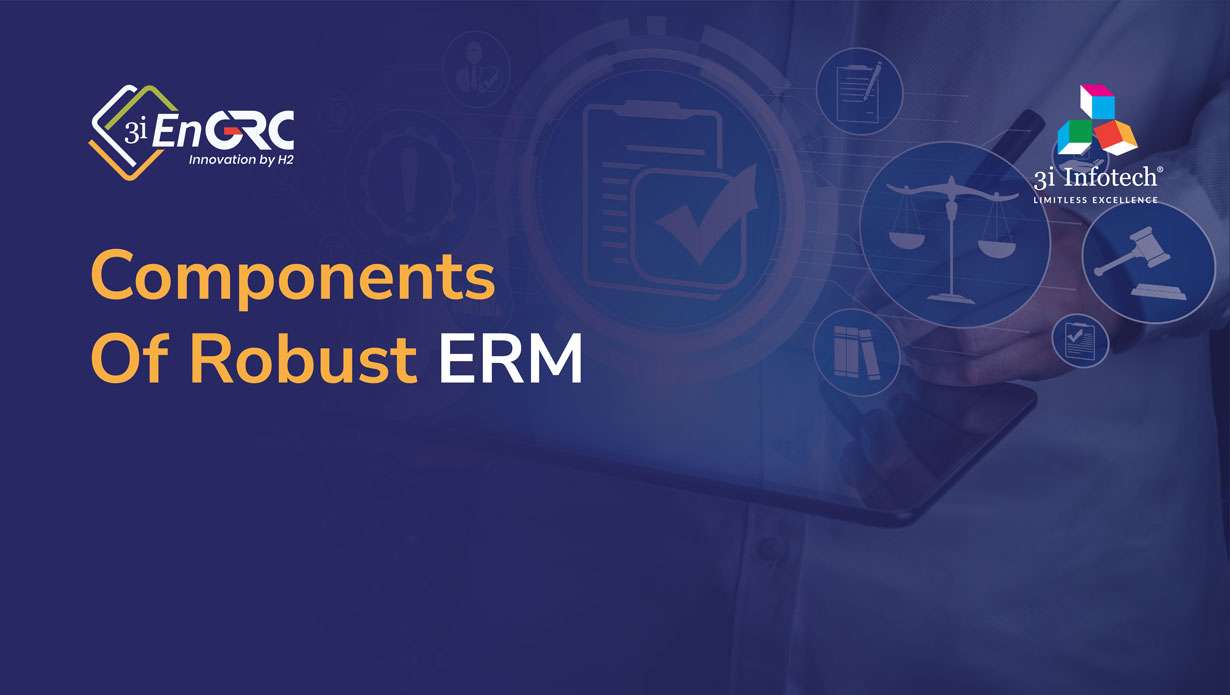Robust Enterprise Risk Management – for business success and resilience
Robust risk management is an essential practice for individuals, organizations, and businesses of all sizes. It involves identifying, assessing, and addressing potential risks that could negatively impact the desired outcomes. All enterprises want to stay in business and out of trouble.
Steps Involved in Robust Risk Management
Step 1: Identify the Risks
The first step in risk management is to identify the potential risks. This requires a comprehensive analysis of the project or business, considering all internal and external factors that could negatively impact its success. Risks can be categorized as financial, legal, operational, strategic, or reputational.
Financial Risks:
Financial risks are those that have the potential to impact the financial stability of a business or organization. These risks could include factors such as fluctuations in the economy, changes in interest rates, currency exchange rate fluctuations, changes in customer demand, or changes in supplier pricing. Businesses need to identify and manage financial risks to ensure that they have the resources and liquidity to continue operating and investing in future growth.
Legal Risks:
Legal risks refer to the potential for an organization to face legal action or penalties due to violations of laws or regulations. These risks can include factors such as compliance with labour laws, environmental regulations, data privacy laws, or contracts with third-party vendors. Failing to manage legal risks could result in significant financial losses, legal penalties, and damage to the organization’s reputation.
Operational Risks:
Operational risks refer to the potential for a business or organization to face disruptions or failures in their day-to-day operations. These risks can include factors such as equipment breakdowns, supply chain disruptions, cyber-attacks, or natural disasters. Operational risks can impact an organization’s ability to deliver products or services, meet customer demand, or maintain business continuity.
Strategic Risks:
Strategic risks refer to the potential for an organization to face risks related to its overall strategic direction or decision-making. These risks can include factors such as market shifts, changes in customer preferences, or disruptive technologies. Strategic risks can impact an organization’s ability to remain competitive in the marketplace and achieve its long-term goals.
Reputational Risks:
Reputational risks refer to the potential for an organization to suffer damage to its reputation due to negative public perception, customer dissatisfaction, or negative publicity. These risks can arise from factors such as product recalls, ethical breaches, or customer data breaches. Reputational risks can have a significant impact on an organization’s brand, customer loyalty, and market share.
Step 2: Assess the Risks
Once the risks are identified, the next step is to assess them. This involves determining the likelihood and potential impact of each risk, as well as prioritizing them based on their severity. The speed at which a risk materialises is also of vital importance. A risk assessment matrix can be used to evaluate the risks and their potential consequences. It may also reveal hidden opportunities.
It is important to consider both qualitative and quantitative risk assessments to achieve a comprehensive view of the enterprises risk situation.
Step 3: Develop a Risk Management Plan
After identifying and assessing the risks, it’s time to develop a risk management plan. This plan should outline the steps to be taken to mitigate, avoid, transfer, or accept each risk. The plan should also assign responsibilities to specific individuals or departments, as well as specify the resources required to implement it.
Developing a risk management plan is a crucial step in the risk management process. It involves outlining the specific steps and strategies to mitigate, avoid, transfer, or accept each identified risk. The following are key aspects to consider when developing a risk management plan:
- Risk Response Strategies
- Assigning Responsibility
- Resource Allocation
- Communication
- Monitoring and Evaluation
- Review and Update
By considering these key aspects, organizations can develop a comprehensive risk management plan that effectively addresses potential risks and improves the likelihood of achieving desired outcomes.
Step 4: Implement the Plan
Once the risk management plan is developed, it’s time to put it into action. This involves communicating the plan to all stakeholders and ensuring that everyone is aware of their roles and responsibilities. The plan should be reviewed and updated regularly to ensure its effectiveness.
Risk Response Strategies: The plan should include specific response strategies for each identified risk. These strategies can be categorized into four main categories: Avoid, Mitigate, Transfer, or Accept. Avoidance strategies involve eliminating the risk altogether, while mitigation strategies involve reducing the likelihood or impact of the risk. Transfer strategies involve transferring the risk to a third party, such as through insurance, while acceptance strategies involve accepting the risk and its potential consequences.
- Assigning Responsibility: Each risk response strategy should be assigned to a specific individual or department responsible for its implementation. This ensures accountability and ensures that each risk is adequately addressed.
- Resource Allocation: The plan should specify the resources required to implement each risk response strategy. These resources can include financial resources, human resources, and time.
- Communication: Effective communication is essential to the success of the risk management plan. The plan should outline the communication protocols, including who should be informed, how frequently updates should be provided, and how progress should be reported.
- Monitoring and Evaluation: The risk management plan should include a process for monitoring and evaluating its effectiveness. This involves regularly assessing the effectiveness of each risk response strategy and making necessary adjustments.
- Review and Update: The plan should be reviewed and updated regularly to ensure its effectiveness and relevance. This involves assessing the effectiveness of the current risk management plan and identifying any new risks that may have arisen.
By considering these key aspects, organizations can implement a comprehensive risk management plan that effectively addresses potential risks and improves the likelihood of achieving desired outcomes.
Step 5: Monitor and Review
Robust risk management is an ongoing process, and it’s essential to monitor and review the plan regularly. This includes identifying any new risks that may arise and adjusting the plan accordingly. The review should also assess the effectiveness of the risk management plan and make necessary changes to improve it.
Effective monitoring and review of a risk management plan are essential to ensure that the plan remains relevant and effective over time. Here are some key aspects to consider when monitoring and reviewing a risk management plan:
- Regular reviews: A risk management plan should be reviewed regularly to ensure that it remains up to date and relevant. The frequency of the reviews will depend on the nature of the risks and the organization’s activities, but they should be done at least annually.
- Identify new risks: As new risks emerge, they should be identified and added to the risk management plan. This could include changes in the business environment, technology advancements, or other external factors that could impact the organization.
- Measure effectiveness: The effectiveness of the risk management plan should be measured regularly to determine if it is achieving its objectives. This could include tracking metrics such as the number of incidents, the severity of incidents, and the financial impact of incidents.
- Review risk appetite: The risk appetite of the organization may change over time, and it is important to review it regularly. This could include adjusting the risk tolerance levels or changing the risk management strategy based on changes in the business environment.
- Adjust the plan: Based on the results of the monitoring and review process, adjustments should be made to the risk management plan. This could include updating risk assessments, revising risk mitigation strategies, or assigning new responsibilities.
- Communication: Effective communication is critical for the monitoring and review process. This includes communicating any changes to the risk management plan to all stakeholders, including employees, customers, and suppliers.
Overall, effective monitoring and review of a risk management plan involves regular assessments of the plan’s effectiveness, identification of new risks, and adjustments to the plan as necessary. By doing so, organizations can ensure that their risk management plan remains relevant and effective over time, helping to protect the organization from potential risks and ensure its long-term success.
Benefits of Robust Risk Management
Robust risk management offers numerous benefits for businesses and organizations. These benefits include:
- Improved decision-making: A robust risk management plan can help organizations make informed decisions, taking into account the potential risks and their consequences.
- Increased efficiency: By identifying potential risks and developing a plan to address them, organizations can streamline their operations and reduce the likelihood of disruptions.
- Enhanced reputation: A well-executed risk management plan can help organizations maintain their reputation by avoiding or mitigating potential risks that could harm their image.
- Reduced financial loss: By identifying and addressing potential risks, organizations can avoid or reduce financial losses that may arise from unforeseen events.
Conclusion
Robust risk management is a crucial practice for businesses and organizations to ensure their long-term success. By identifying, assessing, and addressing potential risks, organizations can make informed decisions, streamline their operations, and reduce the likelihood of financial losses. A well-executed risk management plan can also reveal opportunities, enhance an organization’s reputation and help it maintain a competitive advantage in the marketplace.
Know more. https://www.3i-infotech.com/engrc/

